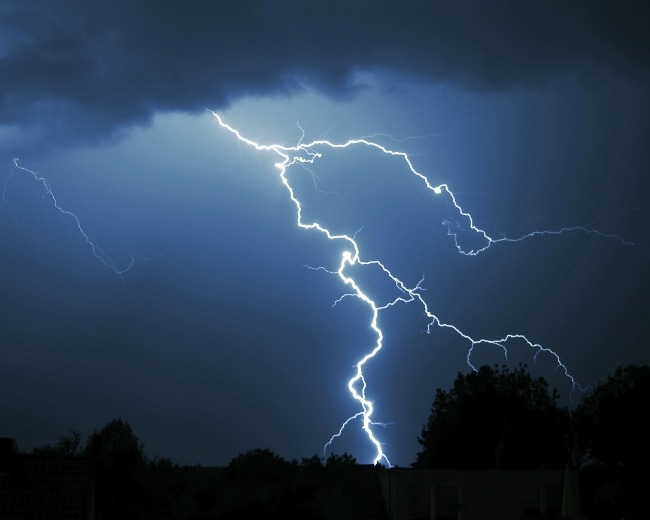How To Survive: Thunderstorm
You're smart, which is why you checked the weather before hitting the trailhead. Problem is, you got beta for the nearest town, which is in a valley, or you just didn't factor in that weather in the mountains is incredibly unpredictable. Now thick thunderheads are rolling in, the sky is flashing like the disco ball at Studio 54, and you're stuck out on an exposed ridge. It's time to take action, and fast! Tony Nester, survivalist and owner of Flagstaff-based Ancient Pathways outdoor survival school, tells you what to do:
Assess the Danger
"If it's headed your way, it's always best to seek out safer terrain. Even if the storm appears far off, and you've got bluebird skies overhead, you're not necessarily safe. Lightning can strike ground more than 25 miles from storm clouds, and consecutive strikes are sometimes spread six to eight miles apart. So what seems far away now could be upon you in a hurry."
Move Lower
"If you're up at elevation, you definitely want to get down into the tree line as fast as possible. Get under some of the smaller growing trees, and by that I mean your groves of saplings and less mature trees as opposed to any lone trees that might be above tree line."
Get Down
"The general rule is if lightning is six miles away or closer—30 seconds or less pass between seeing a lightning bolt strike and hearing its thunderclap—then it's a safety call, and you want to hunker down where you are. Have everybody squat down on their pack and wait it out until the storm passes."
Spread Out
"If you're in a group, you want to spread out at least 30 feet from your companions. It has happened before where people—even herds of animals—are clustered together, and the lightning jumps from one person to the rest of the group. There was a herd of elk in Colorado a few years ago grazing on the side of Mt. Evans when a storm came in. One elk got hit, and zapped all the other elk. I think, in total, 56 elk died from a single strike."
Know Before You Go
"The best source is local knowledge, because every region differs so wildly. Here in northern Arizona, most of the storms come in in the afternoon. However, once you drop down from elevation into the desert near Phoenix, storms tend to roll in after 4pm until about 8pm. The elevation affects the thermals, and what type of weather they're bringing in. 80 percent of flash floods around the world happen between noon and 8pm. So down here in Canyon Country, you look at the weather report, and then you stay out of canyons—slot canyons, especially—during the middle of the day, because that's when those storms tend to build up. Always check with locals before heading into the backcountry."
Tony Nester has taught outdoor survival courses across the desert southwest and Rocky Mountains for 20-plus years through his Ancient Pathways school. He's never once been struck by lightning.
